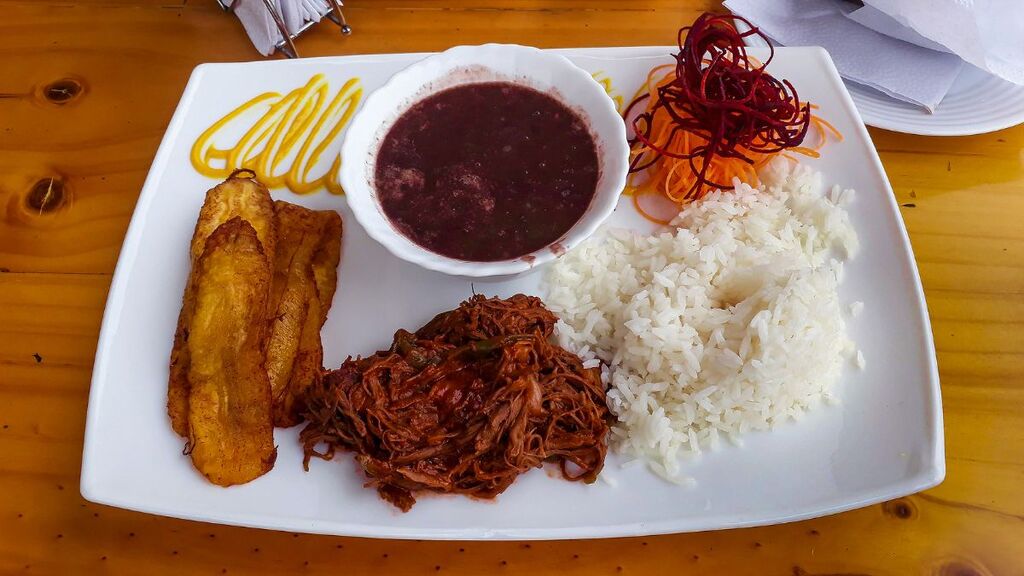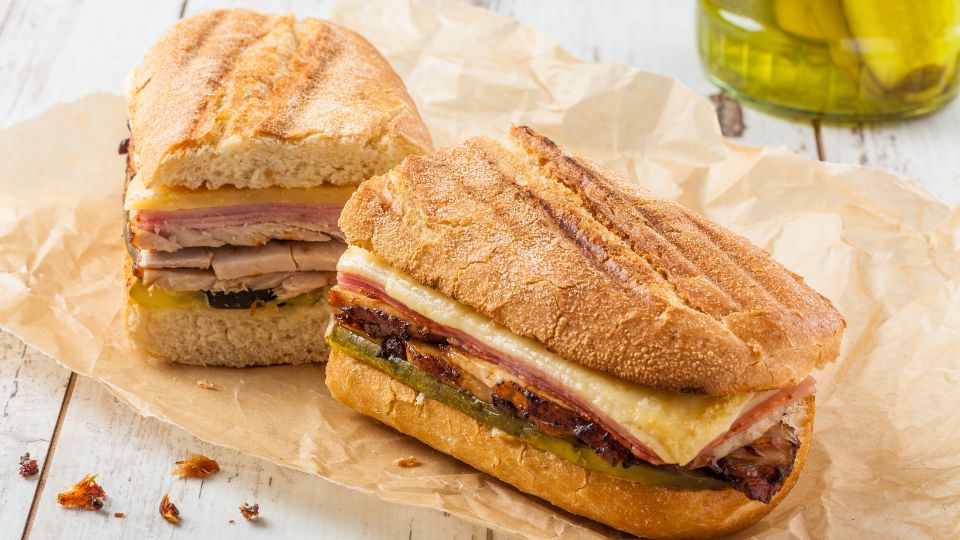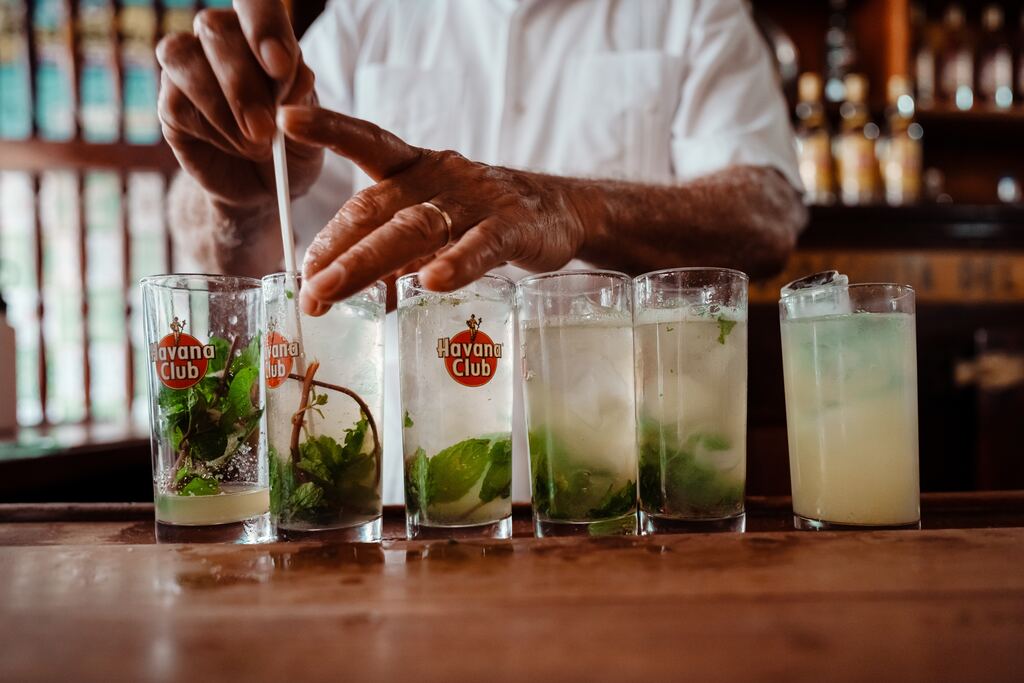Cuba is a country rich in culture, history, and iconic cuisine. Dishes like ropa vieja, Cuban sandwiches, and mojitos have become synonymous with the island nation. But how did these iconic Cuban foods come to be? Their origins and evolution reveal a history of cultural blending that shaped the tastes of Cuba today.
Spanish Influences
Many of Cuba’s most famous dishes have Spanish roots. When Columbus arrived in Cuba in 1492, he brought pigs, cattle, chickens, rice, wheat, and olive oil which greatly shaped the local cuisine. The Spanish went on to colonize the island and rule it for nearly 4 centuries, leaving a lasting mark on Cuban cooking. Dishes like ropa vieja, a shredded beef stew, and Cuban sandwiches, layered with ham, roast pork, cheese, and pickles on Cuban bread, evolved from Spanish cooking techniques. The richness of these meaty dishes reflects the ranching tradition the Spanish established in Cuba, as beef, pork, and cured meats became centerpieces of the Cuban diet. Beyond specific dishes, the Spanish introduced onions, garlic, oregano, cumin, parsley, and bay leaves that fundamentally changed Cuban food’s flavor profiles. Frying with olive oil, braising meats, and marinating proteins in acidic mixtures also trace back to Spanish culinary heritage. Even the Cuban practice of sofrito, seasoning with an aromatic base of onion, garlic, and peppers, has Spanish ancestry. Common Cuban side dishes like moros y cristianos (black beans and rice) and tostones (fried plantains) also originate from imported Spanish crops that took hold in Cuba’s fertile soil. Spanish contributions quite literally provided the meat, seasoning, and sides of Cuban cuisine over the course of colonial development.
African Influences
The Atlantic slave trade brought hundreds of thousands of Africans to work on Cuban sugar plantations starting in the 16th century. These African slaves came primarily from the Yoruba and Bantu regions, bringing their culinary heritage with them, which profoundly shaped Cuban cuisine over time. Dishes like congrí, a rice and bean dish directly descending from Africa, and stews made from root vegetables like yuca and malanga have clear African origins. The use of spices like cloves, cumin, and anise also came from African culinary traditions. Beyond specific ingredients, Africans also influenced cooking techniques like pit roasting root vegetables and meats over open flames. Africans introduced okra, plantains, ackee, and taro root to Cuba as well. Relishes and hot sauces made with chiles and vinegar are also African-derived. Beyond the ingredients themselves, how Cubans traditionally prepare and combine foods also has roots in African cuisine.
Chinese Influences
In the mid-1800s, over 125,000 Chinese laborers were brought to Cuba under contract after the end of slavery to work on sugar plantations. These Chinese immigrants introduced new ingredients and cooking techniques that blended into Cuban cuisine. Asian techniques like stir-frying and deep-frying became common as Chinese cooks modified Cantonese dishes with local Cuban produce. Ingredients like soy sauce, ginger, sesame oil, rice vinegar, and hoisin sauce made their way into Cuban kitchens. Iconic dishes like fried rice emerged from this cultural blending. Beyond specific dishes, the Chinese influence dramatically expanded and enriched the Cuban vegetable repertoire. Bitter melon, bok choy, loofah, fuzzy melon, Chinese broccoli and green onions became Cuban staples during this period. The Chinese also expanded seafood consumption, introducing fish sauce and new preparation techniques.
Native Caribbean Influences
The original native inhabitants of Cuba, the Taíno, contributed several staple ingredients to Cuban cuisine before colonization by the Spanish. Crops like yucca, malanga, boniato (types of root vegetables), guanabana (soursop), mamey, maize, beans, peppers, peanuts, and sweet potatoes have been cultivated in Cuba since the 15th century BC. Beyond ingredients, native cooking techniques like pit roasting, stewing in earthenware pots, and slow cooking endured over time. Sofrito also has its earliest roots in native Taíno cuisine, where cooks would add aromatic bits of onion, garlic, and ají peppers to seafood and root vegetable dishes. The Taíno affinity for smoking and drying foods over low heat influenced Cuban charcuterie and meat preservation methods as well. This indigenous Caribbean foundation provided the native crops, flavors, and cooking styles Cuban cuisine built upon when new cultures arrived.
The Evolution of Iconic Dishes
Examining the development of a few iconic Cuban dishes shows how the influences of different cultures blended together over time to produce the cuisine Cubans know today.
Ropa Vieja

Ropa vieja, which literally translates to “old clothes,” has disputed origins. Some historians link it to the Canary Islands beef dish “ropa vieja de pulpo.” Others believe it evolved from Sephardic Jewish stews brought to Cuba by Spanish Jewish immigrants fleeing the Inquisition. Regardless, ropa vieja exemplifies the culinary blending that shaped Cuban cuisine. Spanish techniques like slow braising meats melded with Taíno root vegetables like yucca and plantains. African spices like cumin added complexity while later Chinese additions like soy sauce added savoriness. Together, these influences produced the satisfying shredded beef stew served with rice, beans, and fried plantains that Cubans worldwide enjoy today. It encapsulates centuries of Cuban cultural melding in one iconic dish.
Cuban Sandwiches

While the Cuban sandwich likely originated in Tampa, Florida as Cuban immigrants flocked there in the late 1800s, the layers tell a story of Cuba’s diverse culinary evolution. The crisp Cuban bread reflects the Spanish love of crusty rolls. The ham has roots in Cuban charcuterie adapted from Spain. The pork emerges from Taíno spit roasting traditions. Later Tampa additions like dill pickles and yellow mustard came from ties between Florida and Cuba after the island’s independence from Spain. Together, these influences create the pressed sandwich beloved today. As a bonus, Cubans later swapped out salami for roast pork to make the sandwich their own.
Picadillo

Picadillo, the Cuban take on hash or meat pie, also reveals the cultural blending process. It combines Spanish techniques like sautéing and simmering with African spices like cumin and cloves. Potatoes were a later addition after the vegetable arrived from the Canary Islands. Capers and green olives also got incorporated over time for tartness. While the dish mimics Spanish picadillo in style, the use of African seasonings and starchy tubers gives it a distinctly Cuban flair. It offers a tasty culinary microcosm of Cuban history in one simple meal.
Mojitos

No discussion of Cuban cuisine is complete without the iconic mojito cocktail. Rum and sugarcane have been produced in Cuba since the 16th century. But mint, lime juice, and later soda water came from Spanish and American influence. African slaves likely first mixed rum with mint and lime during the sugar harvests as a refreshing drink. Some believe the African word “mojo” referring to a sauce or marinade inspired the drink’s name. The exact origins are uncertain, but the mojito brings Cuban history alive with each sip, and it still satisfies on hot days centuries later. The blend of local rum with imported flavors encapsulates Cuba’s cultural fusion.
Looking to the Future
Cuban cuisine draws from centuries of cultural influences blending Native, African, Spanish, and Chinese culinary traditions on the island. Looking to the future, Cuban food will likely continue evolving abroad as new waves of immigrants blend flavors in their adoptive countries. In Cuba itself, organic farming movements expanded tourism, and chefs reinventing traditional dishes with modern techniques will shape Cuban cuisine’s next chapter. But the iconic tastes ingrained over generations remain at the heart of Cuban cooking wherever it is enjoyed. The history and culture is embedded and savored in each bite.
